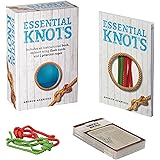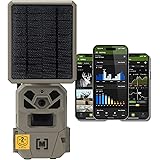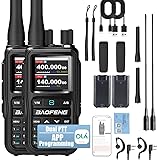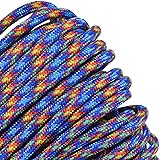Mastering Primitive Survival Weapons for Any Emergency
How prepared are you to face an emergency situation without modern conveniences? In a true survival scenario, traditional firearms or specialized gear might not always be available. Understanding and utilizing primitive survival weapons becomes not just a skill, but a necessity for self-defense and securing food. The video above has highlighted five crucial tools that have sustained humanity for millennia. This comprehensive guide will delve deeper into each of these ingenious implements, exploring their history, mechanics, and practical application for the untrained survivor.
Learning how to effectively wield these ancient technologies can dramatically increase your chances of thriving, not just surviving. From hunting small game to deterring threats, these simple yet powerful weapons rely on leverage, momentum, and skill. Developing proficiency with these tools requires dedication and practice, transforming basic materials into life-saving instruments. We will explore each weapon’s unique advantages and disadvantages, providing a clearer picture of what it takes to master them in a wilderness setting.
5. The Humble Yet Potent Sling
Originating in antiquity, the sling stands as one of humanity’s earliest long-range projectile weapons. Historically employed for hunting game and in fierce combat, its design is remarkably simple, consisting merely of a pouch and two cords. The user swings the sling in an arc, releasing one tab at a precisely timed moment, which propels a stone or projectile with surprising force and distance. This method significantly extends the range and velocity achievable compared to throwing by hand alone, making it a formidable tool.
The primary advantage of the sling in a survival context is its ease of construction from readily available natural materials. Finding suitable stones for ammunition is also typically straightforward in many environments. However, the true challenge lies in its operation; the sling is notoriously difficult to master. Achieving accuracy requires months, or even years, of dedicated practice, making it a less ideal choice for an immediate, untrained survivor seeking a reliable weapon for immediate use. For those with time to practice, it becomes an incredibly effective and resource-light option.
4. The Entangling Power of the Bola
Known by various names, including boleadoras, the bola is a fascinating throwing weapon composed of interconnected weights on cords. This clever design was famously utilized by cowboys in Argentina to capture animals by entangling their legs, bringing them down swiftly. Indigenous cultures across the globe also developed similar devices, such as the Inuit who employed bolas for hunting birds, demonstrating its versatility in different environments and against various prey.
Similar to the sling, becoming proficient with the bola demands considerable practice to achieve accuracy and effectiveness. Beyond its primary function of entanglement, the weighted ends can inflict severe injuries when thrown with substantial force, offering a dual purpose. Crafting a bola involves sourcing strong cords and finding suitable weights, such as stones or dense wood, which can be challenging but not impossible in a survival scenario. Its strategic use focuses on disabling rather than direct impact, requiring a different approach to hunting or defense.
3. The Primitive Effectiveness of the Throwing Stick
The throwing stick, also referred to as a throwing club, represents one of the earliest and most widespread weapons used by early humans across the world. Its simplicity belies its effectiveness; when properly thrown, the stick rotates rapidly, impacting the target with one of its ends. This rotational force can be surprisingly devastating, capable of maiming or even killing small to medium-sized game with a well-aimed throw.
The primary limitation of the throwing stick is its relatively short range, necessitating the user to get quite close to their intended prey or target. However, this often-underestimated survival weapon possesses a significant advantage for the untrained survivor. Many individuals are often surprised by their innate ability to hit a target with a throwing stick after just a little practice, making it more accessible than other primitive weapons. Its immediate availability from natural surroundings makes it an excellent improvised tool for various emergency situations.
2. Leveraging Velocity with the Atlatl (Spear Thrower)
The atlatl, or spear thrower, is an ingenious tool that employs the principle of leverage to achieve much greater velocity and distance in dart throwing. This device essentially acts as an extension of the thrower’s arm, allowing a dart to be accelerated to impressive speeds, potentially up to 150 kilometers per hour. The throwing dart itself needs to be a straight, long, and flexible shaft, which can be challenging to locate in nature.
Often, a suitable dart shaft must be straightened by carefully bending it over a fire, a process that requires patience and skill. After fire hardening the tip for durability and attaching some feathers for flight stability, the dart becomes a formidable projectile. The extended range and enhanced precision offered by the spear thrower are significant advantages for hunting larger game. While it typically requires a few weeks of consistent practice to transform the atlatl into an effective hunting weapon, the investment of time yields a powerful and accurate primitive hunting system.
1. The Enduring Power of the Bow and Arrow
The bow and arrow stands as arguably the most advanced primitive weapon system, utilized by Homo Sapiens since the Stone Age and continuing its legacy into modern times. A bow, a flexible arc, propels aerodynamic projectiles known as arrows, combining power with remarkable precision at longer distances. It remains a popular choice for thousands of hunters globally, targeting both small and large game, showcasing its timeless effectiveness.
For the untrained survivor, the bow and arrow offers a compelling balance of power and learning curve, typically requiring a few days to weeks of practice to reliably hit an animal at a respectable distance. While the learning curve for shooting is manageable, the construction of a self-bow from natural materials presents its own challenge, often taking hours to days to carve a proper, functional bow. Furthermore, crafting suitable arrow shafts and a durable bowstring requires substantial time and specific materials, making preparation a critical step. A simpler “bundle bow” can sometimes serve as a more immediate, albeit less powerful, alternative in a true emergency, highlighting the adaptability of survival weapons design.











